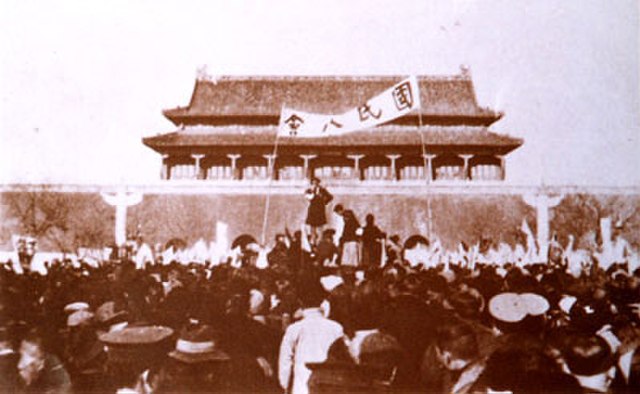Tiananmen Square or Tian'anmen Square is a city square in the city center of Beijing, China, named after the eponymous Tiananmen located to its north, which separates it from the Forbidden City. The square contains the Monument to the People's Heroes, the Great Hall of the People, the National Museum of China, and the Mausoleum of Mao Zedong. Mao Zedong proclaimed the founding of the People's Republic of China in the square on October 1, 1949; the anniversary of this event is still observed there. The size of Tiananmen Square is 765 x 282 meters. It has great cultural significance as it was the site of several important events in Chinese history.
Tiananmen Square in 2006
Tiananmen Square in the early 20th century, viewed from Zhengyangmen Gate (Qianmen Gate) with the Gate of China, later removed in 1954 to make room for the present-day Mao Zedong Mausoleum. The "corridor of a thousand steps" is visible (behind the Gate of China) and Tiananmen Gate is in the distance.
Tiananmen Square during the May Fourth movement in 1919
1967 satellite image of Tiananmen Square with the Tian'anmen gate to the north. Further work on the square was carried out in the 1970s to extend the open plaza by demolishing the buildings immediately to the south of the square.
A square is an open public space used for various activities. Squares are not necessarily a true geometric square. Most squares are hardscapes suitable for open markets, concerts, political rallies, and other events that require firm ground.
Piazza della Signoria, in Florence, Italy, a historic example of a traditional public square
Announcement of the establishment of the State of Slovenes, Croats and Serbs on Congress Square in 1918
The Saint Peter's Square is the heart of the Greek city of Argos.
Fountain in People's Square in Shanghai, China








